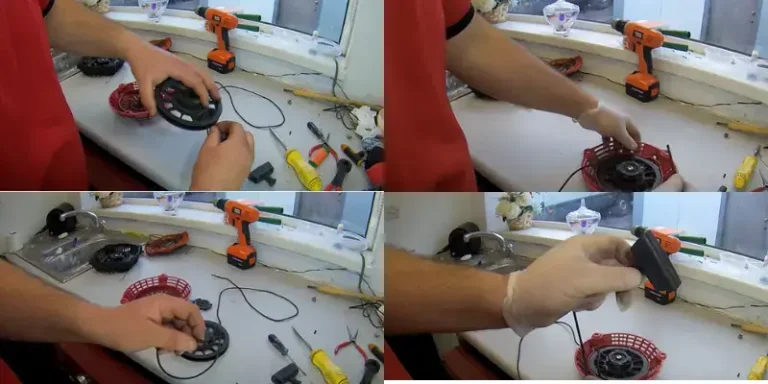10 Tips to Keep Your Lawn Healthy During Summer
Summer presents unique challenges for lawn care, with the combination of heat, drought, and increased foot traffic making it difficult to maintain a lush, green lawn. However, with the right techniques and a bit of effort, you can keep your lawn looking healthy and vibrant throughout the hottest months of the year.
Understanding Summer Lawn Care
Summer lawn care differs significantly from the care required in other seasons like spring and fall. During summer, the primary challenges include heat, drought, and wear and tear from more frequent use. These factors can stress your lawn, making it more susceptible to damage and disease.
Knowing the type of grass you have is important, as cool-season grasses and warm-season grasses have different needs. Cool-season grasses, such as fescue and bluegrass, grow in cooler temperatures and may struggle in extreme heat. In contrast, warm-season grasses like Bermuda and zoysia are more tolerant of high temperatures and may require different maintenance practices.
Proper Watering
Proper watering is essential for summer lawn care. Deep and infrequent watering is the best approach to ensure your lawn develops deep roots. This method encourages the grass to seek water deeper in the soil, making it more drought-resistant.
Watering in the early morning or late evening is ideal to reduce evaporation and ensure the water reaches the roots. Additionally, consider using a rain gauge to monitor rainfall and adjust your watering schedule accordingly. Conserving water while ensuring deep root growth will help keep your lawn healthy all summer long.
Mowing Techniques
Adjusting your mower height in the summer is important for lawn health. Taller grass provides shade for the soil, reducing water loss and helping to prevent weed growth. The recommended height varies by grass type, but generally, keeping your grass about 3 inches tall is beneficial during hot weather.
Frequent mowing with sharp blades is also crucial. Dull blades can tear the grass, making it more susceptible to disease. Remember to follow the one-third rule: never cut more than one-third of the grass height at a time to avoid stressing the lawn.
Fertilizing the Right Way
Using slow-release fertilizers in the summer helps avoid excessive growth, which can stress your lawn. Slow-release fertilizers provide nutrients over time, supporting steady, healthy growth without overwhelming the grass.
The recommended fertilization schedule varies depending on the type of grass. For warm-season grasses, mid-summer is a good time to fertilize. For cool-season grasses, it’s best to fertilize lightly, if at all, during the summer, focusing more on early fall and spring applications.
Weed Control
Regular weeding is essential to prevent competition for nutrients and water. Summer weeds can quickly take over a lawn if not controlled, so it’s important to stay vigilant.
Safe and effective weed removal methods include hand-pulling and using selective herbicides. Maintaining a weed-free lawn not only improves its appearance but also promotes healthier grass by reducing competition for resources.
Aeration for Healthy Soil
Aerating your lawn during the summer helps improve soil compaction and encourages healthy root growth. Aeration involves perforating the soil with small holes to allow air, water, and nutrients to penetrate deeper into the soil.
The best time for aeration depends on your grass type. For warm-season grasses, early summer is ideal. Cool-season grasses benefit more from fall aeration. Using a core aerator, either rented or hired, can make the process easier and more effective.
Overseeding Bare Patches
Filling in bare spots by overseeding helps maintain a uniform lawn. Bare patches can be caused by various factors, including heavy foot traffic, disease, or pests. Overseeding in the summer ensures these patches are filled before they become a bigger problem.
Choose grass seeds that match your existing lawn and are suitable for summer growth. Follow a step-by-step guide: prepare the soil, scatter the seeds evenly, and water regularly until the new grass is established. This will help keep your lawn looking lush and even.
Pest Control
Summer pests like grubs and beetles can cause significant damage to your lawn. These pests feed on grass roots, leading to brown patches and weakened turf.
Both natural and chemical control methods can be effective. Natural methods include introducing beneficial nematodes or using milky spore to target grubs. Chemical pesticides can also be used but should be applied carefully to avoid harming beneficial insects. Regularly inspect your lawn for signs of infestation and act quickly to address any issues.
Managing Foot Traffic
Heavy foot traffic can compact the soil and damage grass, leading to thin or bare patches. To minimize damage, create designated paths or temporary walkways for high-traffic areas.
If your lawn hosts events or gatherings, consider rotating areas of use to allow grass time to recover. After events, water the affected areas deeply and aerate if necessary to help the grass recover more quickly.
Grass Species Considerations
Different grass species have different needs during the summer. Cool-season grasses, such as Kentucky bluegrass and ryegrass, may struggle in extreme heat and require more frequent watering and shading.
Warm-season grasses, like Bermuda and zoysia, grow in hot weather and require less water. Understanding the specific care requirements for your grass type can help you tailor your lawn care practices for optimal results. Choose the right grass for your climate to ensure a healthy lawn year-round.
Mulching for Moisture Retention
Mulching is an effective way to retain moisture, reduce evaporation, and improve soil health. Applying a layer of mulch around trees and shrubs helps conserve water and keeps the soil cool.
There are different types of mulch to choose from, including organic options like wood chips and straw. Spread mulch evenly and avoid piling it against the bases of plants to prevent rot. Mulching best practices include applying a 2-3 inch layer and refreshing it as needed throughout the summer.
Conclusion
Maintaining a healthy lawn during the summer requires attention to watering, mowing, fertilizing, and more. By following these ten tips, you can keep your lawn looking vibrant and lush, even in the hottest months. Implement these strategies to enjoy a beautiful lawn all summer. Feel free to share your tips and experiences in the comments below.

About Naveed A Hashmi
In my childhood, I used to see my parents while working in the land, for these reasons today I have been serving the same as our own tradition and culture. I thus love to stay in it, because I want to learn something advanced and new so that I may improve my farm’s contour and help others with my experience.







